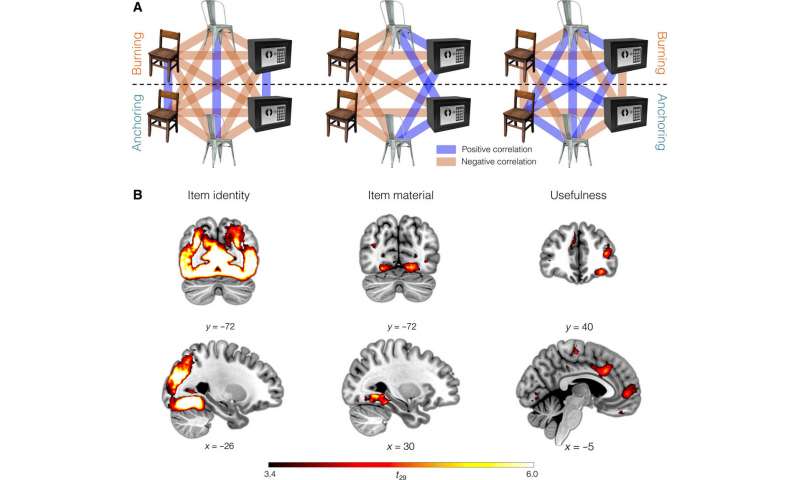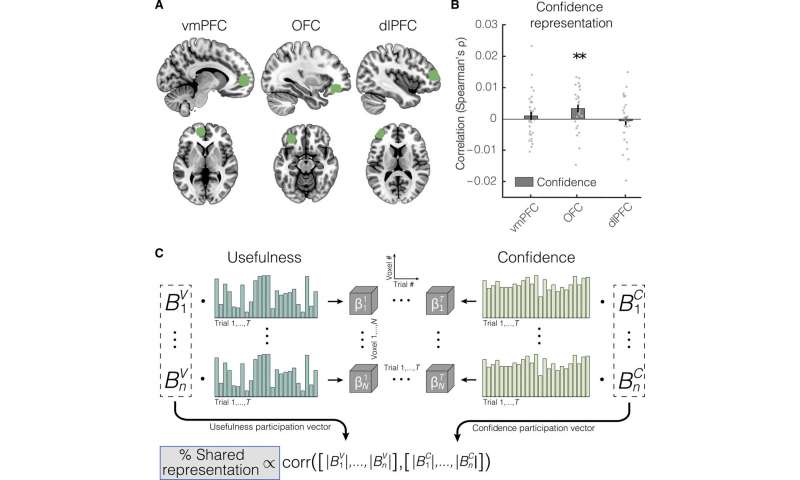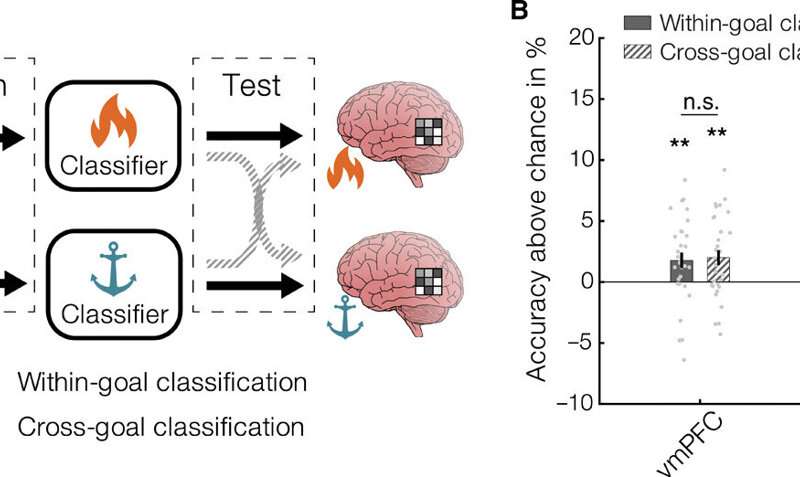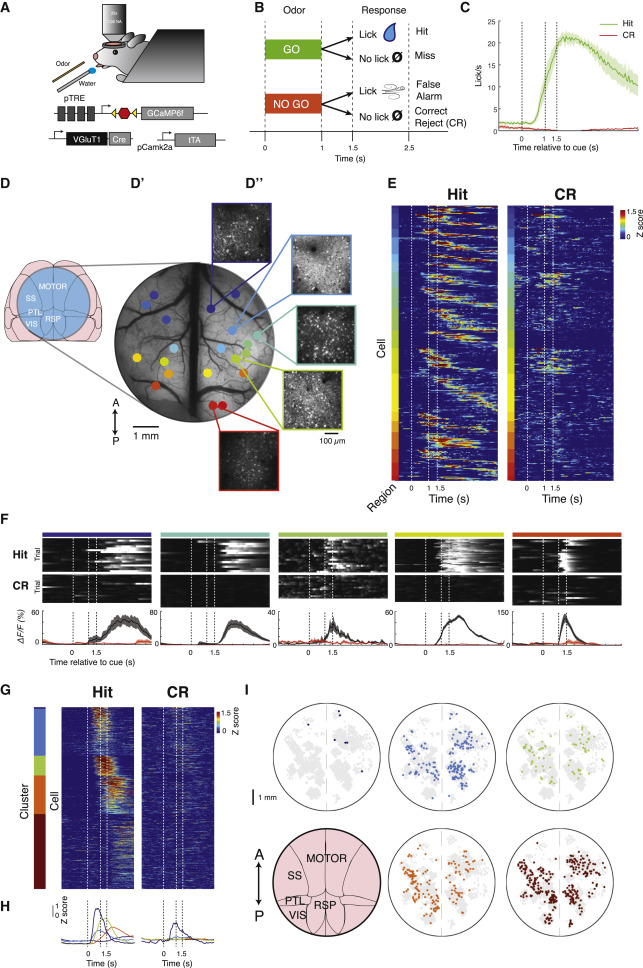In its hedonistic aspects, value is often associated with reward. However, when circumstances change, value must also change. In this work, G. Castegnetti and a research team at the Institute of cognitive neuroscience and the Wellcome center for human neuroimaging at the University College, London, U.K., examined how value representations in the brain can be reshaped under different behavioral goals. To accomplish this, they devised a new task to decouple usefulness from its hedonistic attributes to study flexible goal-dependent mapping. In this work, Castegnetti et al. showed how regions in the prefrontal cortex were associated with value computation to achieve a specific goal. The team then identified a coding scheme in the prefrontal cortex to represent values regardless of the goal to support generalizations across contexts. A change in the goals triggered reorganization of the neural representation of values to accomplish flexible behavior.
Goal-oriented behavior
If an individual is stranded on a deserted island after crashing an aircraft, they might need to choose between a metal chair and a wooden chair to light a fire to keep warm. This goal is very different from one involving choosing between chairs to sit on. For instance, while the wooden chair would be very good for burning, it might be uncomfortable to sit on, whereas the metal chair cannot be burned. These shared concepts of furniture for sitting therefore widely differ in other conceptual subspaces. Despite these differences, the brain can readily provide answers to these complexities. Neuroscientists have increasingly understood the neural circuitry underpinning such value-based decisions. This established a primary role for the ventromedial prefrontal cortex (vmPFC), although algorithmic implementation of this value computation has remained elusive thus far. In this work, Castegnetti et al. tested if changing a goal triggered the reorganization of perceptual information even in the absence of an explicit evaluation or choice. The team showed how remapping occurred on a rapid time scale under top-down control and how humans can perform this task flexibly for very abstract, hitherto unencountered scenarios.
Experiments
To understand this, the researchers devised an experiment where human volunteers underwent functional neuroimaging while imagining using different items to achieve different goals. The scientists then tested the effect of goal manipulation on brain activity using functional magnetic resonance imaging (fMRI) data alongside representational similarity analysis (RSA) to study the representational context of brain activity patterns. The outcomes showed how the vmPFC (ventromedial prefrontal cortex) encoded a distributed code for value that is independent of the decision maker’s current goal.
During the experiments, on day one, Castegnetti et al. acquired subjective variations of a set of 120 items in three different sessions. At the first session, participants identified their familiarity with each item and its non-monetary value. During the second and third session, they evaluated the usefulness of each item to achieve two goals—start a fire and anchor a boat. And then they reported their confidence in such evaluations. The team noted how a weak correlation between these scores were critical to clearly differentiate their signature effect on brain activity and behavior. On day two, the team conducted fMRI scanning with the participants who engaged with two kinds of trials—imagination and choice. During imagination trials, they were asked to vividly imagine the use of an item to achieve a proposed goal. The average reaction time for choice was 1.47 seconds and was unaffected by goal manipulation to show how the two goals were approximately balanced relative to difficulty.

Neuroimaging—univariate and multivariate analyses
The participant’s choices were guided by the usefulness of the items toward the current goal and not based on their value assigned under alternative circumstances. The team therefore hypothesized that the activity in the vmPFC mainly associated with value computation and choice would also be regulated by the congruent usefulness alone. To test this, they regressed the blood oxygen-level dependent (BOLD) signal observed during choice relative to the signed difference between chosen and unchosen usefulness. The results suggested the value signal in the vmPFC activity to not be an absolute property of the item relative to subjective preferences but determined by the item’s usefulness towards the decision maker’s current goal. Based on the participant’s data, they did not note activity in the vmPFC or posterior cingulate cortex or in other prefrontal areas even at liberal thresholds, to suggest limited involvement of these regions to situations where usefulness triggers a behavioral response. The team next studied the multivariate analysis approach to test the representational content of brain activity patterns.

Understanding value and confidence in the brain
The confidence on the usefulness estimations also affected behavior to show that confidence is intimately linked with value in guiding decisions in both animals and humans. The results implied the integration of the input stimuli into behavior usefulness and confidence. As a result, Castegnetti et al. sought evidence of neural activity underpinning the integrative code. After conducting an RSA (representational similarity analysis) they represented he usefulness in the vmPFC (ventromedial prefrontal cortex), orbitofrontal cortex (OFC), and dorsolateral prefrontal cortex (dlPFC) regions, since they highlight a common value currency in the prefrontal area. The scientists noted a significant correlation between confidence and neural activity in the OFC, while the vmPFC and dlPFC did not show a significant correlation between the blood oxygen-level dependent signal and the confidence. Researchers had previously suggested that confidence and the related decision accuracy are inherently valuable for automatic integration in the value signal. While usefulness is goal dependent, the team found evidence that the representation of high usefulness is conserved across goals in the vmPFC region, without finding evidence in the OFC and dlPFC regions.

Outlook
In this way, G. Castegnetti and colleagues studied how the human brain flexibly adapted its neural representation of usefulness relative to changes in the decision maker’s goals. The work provides empirical evidence to how the prefrontal region of the brain adjusted neural representation relative to changes in behavioral goals. The findings nuance the commonly held view that equates reward and pleasantness and instead emphasized the role of goal-dependent usefulness representations to guide choice and construct value. Mapping how the brain computes these feats will provide essential clues to understand and design flexible cognitive architectures.
The brain region responsible for self-bias in memory
More information:
Castegnetti G. et al. How usefulness shapes neural representations during goal-directed behavior, Science Advances, DOI: 10.1126/sciadv.abd5363
Martino B. et al. Confidence in value-based choice, Nature Neuroscience, doi.org/10.1038/nn.3279
Camillo Padoa-Schioppa et al. Neurons in the orbitofrontal cortex encode economic value, Nature (2006). DOI: 10.1038/nature04676
2021 Science X Network
Citation:
Value and neural representations during goal-directed behavior (2021, April 23)
retrieved 23 April 2021
from https://medicalxpress.com/news/2021-04-neural-representations-goal-directed-behavior.html
This document is subject to copyright. Apart from any fair dealing for the purpose of private study or research, no
part may be reproduced without the written permission. The content is provided for information purposes only.



